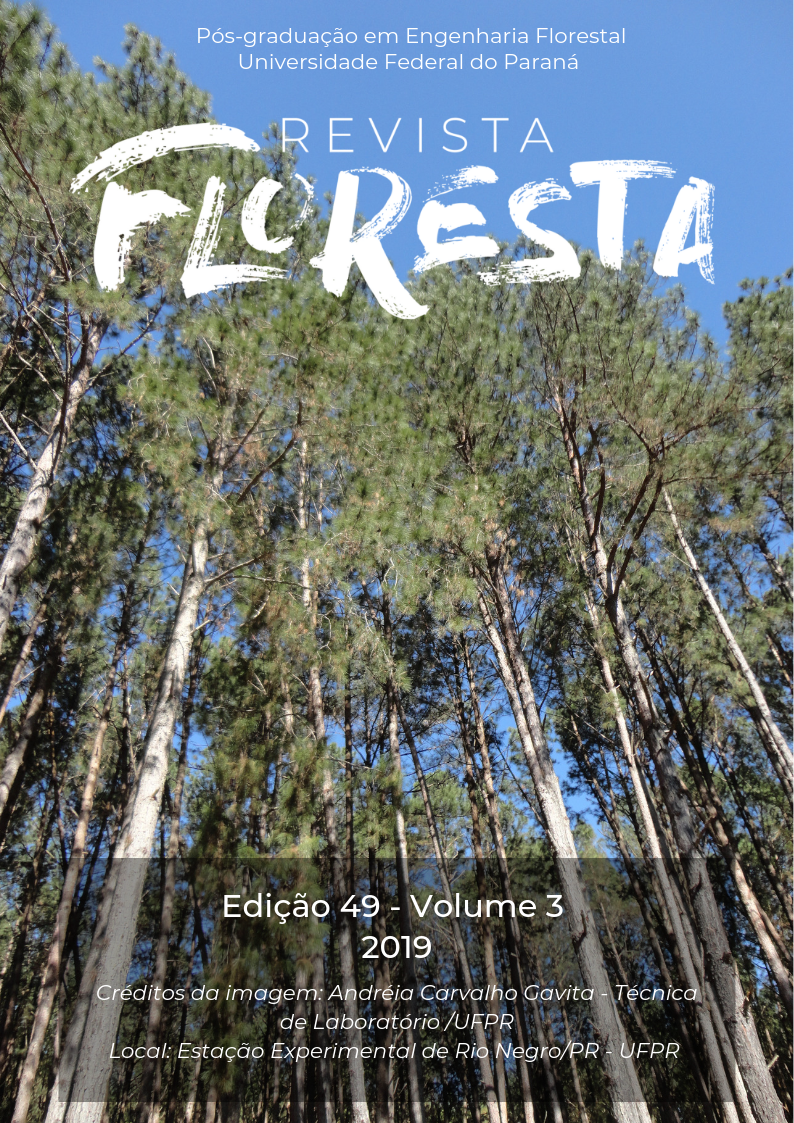DYNAMICS OF BORDER VEGETATION AND EDAPHIC-CLIMATOLOGY OF CLEARINGS IN AN AREA OF CAATINGA IN THE SEMI-ARID REGION OF BRAZIL.
DOI:
https://doi.org/10.5380/rf.v49i3.59715Palavras-chave:
Anthropic clearings, natural regeneration, climatological edaphic parameters, dry tropical forest.Resumo
The use and unsustainable occupation in the semi-arid areas have resulted throughout its historical process in strong negative impacts by opening clearings in the areas of Caatinga, which need to be identified and studied to reverse this situation. The objective of this work was to analyze the dynamics of border of vegetation and edaphic-climatological clearings in a Caatinga area in the municipality of Sumé, state of Paraíba, Brazil. The study was conducted in the Experimental Area Reserved for Ecology and Dynamic Studies of the Caatinga of LAEB/CDSA/UFCG (7°39'38.8'' S and 36°53'42.4'' W, with 538 m of altitude). The clearings were isolated, and monitored between 2013 and 2015, soil and agrometeorological data were collected. Shrubs and live trees with diameter at ground level and height >0.03 and >1.0 m respectively were considered as border individuals. The highest values of soil density were observed for the clearings that presented the lowest levels of organic matter. 62% of the clearings had an increase in their area due to the high mortality of Croton blanchetianus Baill. and 38% had their area reduced due to the colonization of young, mainly Jatropha mollissima (Pohl) Baill. The floristic composition of the border comprised six species distributed in six genera and four families, being Fabaceae and Euphorbiaceae the most representative. The number of border individuals and recorded mortality were fully correlated with climatic parameters. Therefore, although the clearings are in the process of natural regeneration, climatic factors have strongly influenced the delay of this process.
Downloads
Publicado
Como Citar
Edição
Seção
Licença
Direitos Autorais para artigos publicados nesta revista são do autor, com direitos de primeira publicação para a revista. Em virtude da aparecerem nesta revista de acesso público, os artigos são de uso gratuito, com atribuições próprias, em aplicações educacionais e não-comerciais.A revista, seguindo a recomendações do movimento Acesso Aberto, proporciona acesso publico a todo o seu conteudo, seguindo o principio de que tornar gratuito o acesso a pesquisas gera um maior intrcambio global de conhecimento.
Conteúdos do periódico licenciados sob uma CC BY-NC-SA 4.0



